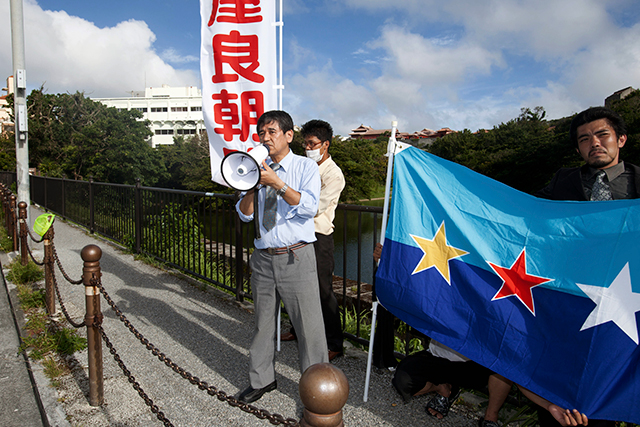Okinawans Want Their Land Back. Is That So Hard to Understand?

Okinawa, which hosts 75 percent of US military bases in Japan, is balking at plans for another base.
Once the independent kingdom of Ryukyu, Okinawa, was annexed by Japan in 1872. At the end of World War II, exactly 70 years ago, Okinawa was the site of one of the war's most ferocious battles. Caught between the armies of Japan and the United States, Okinawans suffered unspeakable horrors during the "typhoon of steel." Viewed as expendable under imperial Japan, many Okinawans were killed outright by Japanese soldiers or forced to commit mass suicide. An estimated 120,000 Okinawans - between one-third and one-quarter of the population - died between March and June 1945.
The pain inflicted during the war and its aftermath underscored the Okinawan core value nuchi du takara ("life is precious") and left many Okinawans highly adverse to warfare and militarism. Despite this, Okinawa has remained one of the most militarized places in the world for more than 70 years, first under direct US military occupation and continuing after Okinawa's "reversion" to Japan in 1972.
Okinawa is by far the smallest of Japan's 47 prefectures, and although it accounts for less than one percent of Japanese territory, it is home to around 24,000 US military personnel, almost half of Japan's total, and is burdened with nearly 75 percent of US bases in Japan.


